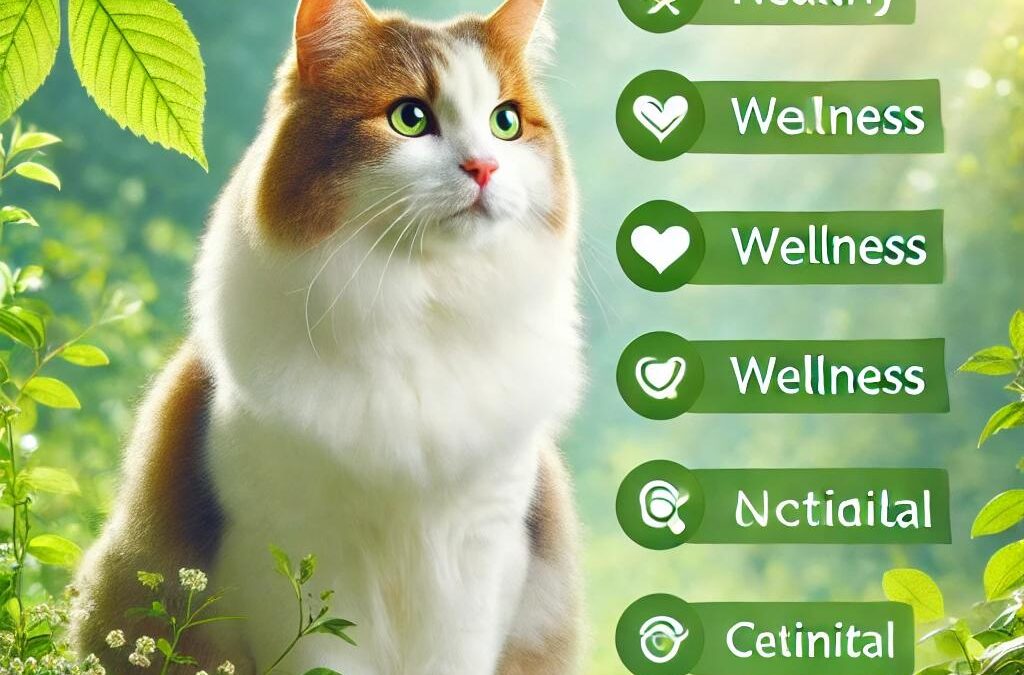
經過 TCMVET | 2024 年 10 月 27 日 | 貓癌症和腫瘤
膽管癌,也稱為膽管癌,是一種影響貓肝臟的嚴重疾病,主要發生在十歲及以上的貓身上。這種侵襲性癌症發生在膽管內,膽汁在膽管中產生並從肝臟輸送到腸道。在貓中,由於症狀的微妙發作,這種類型的癌症通常很難早期發現。識別疾病的跡象並了解治療方案可以幫助控制其進展並提高貓的生活品質。
什麼是貓咪的膽管癌?
膽管癌是一種起源於肝臟膽管上皮層的癌症。此疾病最常影響肝臟內的肝內膽管,而不是肝臟外的肝外膽管。不幸的是,這種類型的肝癌在老年貓中很常見,尤其是雌性貓,儘管它沒有已知的品種傾向。
膽管癌需要注意的症狀
鑑於其位於肝臟中,膽管癌可以透過阻礙膽汁流動來破壞基本的身體功能。以下是需要注意的關鍵症狀:
- 黃疸(眼睛和皮膚發黃): 膽汁流動受阻會導致膽紅素積聚,引起黃疸。
- 食慾不振和體重減輕: 患有肝腫瘤的貓可能會出現食慾明顯下降和體重逐漸減輕的情況。
- Lethargy: 身體努力控制毒素的累積常常會讓受影響的貓咪感到疲倦。
- 腹痛或腹脹: 如果肝臟或膽管腫脹,貓可能會表現出不適。
由於這些症狀與其他肝臟疾病相似,因此專業的獸醫診斷至關重要。
併發症和癌症擴散
膽管癌面臨的挑戰之一是其高轉移率,67% 至 88% 的受影響貓的腫瘤會擴散到其他器官。一旦癌症進展,它就會擴散到肺部、腹壁、胰腺,甚至是膈肌周圍的淋巴結。這種廣泛的轉移往往使治療變得複雜,強調早期介入的重要性。
貓膽管癌的治療選擇
治療貓的膽管癌通常需要採取多方面的方法。主要治療方法如下:
- 手術: 如果腫瘤位於肝臟膽管內且尚未廣泛擴散,可以考慮手術切除。然而,由於轉移風險較高,僅手術可能無法完全有效。
- 化療: 由於膽管癌易於轉移,因此化療通常用於減緩腫瘤生長並控制轉移。治療計劃可能會根據傳播程度而有所不同。
- 支持和安寧療護: 對於晚期病例,安寧療護對於維持舒適度和提高生活品質至關重要。支持性護理可能包括疼痛管理、食慾興奮劑和支持肝臟健康的飲食改變。
預後和生活品質
由於疾病的高轉移潛力和難以完全手術切除,被診斷出患有膽管癌的貓的預後通常很謹慎。然而,及時治療和仔細管理症狀可以幫助延長他們的生命並改善健康。密切監測貓的健康狀況,尤其是在年老的時候,如果出現任何症狀,尋求獸醫的建議至關重要。
貓的膽管癌是一種嚴重的疾病,需要認真的照顧和認識。透過了解症狀和潛在的治療方案,寵物主人可以與獸醫合作制定最適合貓咪需求的照護計畫。早期發現和周到的管理可以幫助貓咪及其主人輕鬆度過旅程。

經過 TCMVET | 2024 年 10 月 10 日 | 貓癌症和腫瘤
身為貓主人,注意到寵物飲食習慣突然或逐漸改變可能會令人震驚。雖然牙齒疾病是貓咪拒絕食物的最常見原因,但必須意識到口腔癌也可能是潛在原因。根據康乃爾大學獸醫學院的數據,口腔癌是貓咪中第四大最常見的癌症類型,如果不及時治療,可能會造成嚴重的健康風險。
了解貓的口腔癌
貓的口腔癌通常表現為口腔內的腫瘤或病變,這可能會帶來疼痛並導致行為的顯著變化,包括拒絕進食。口腔中可能發生的腫瘤類型包括鱗狀細胞癌、纖維肉瘤和黑色素瘤等。這些腫瘤不僅會引起不適,還會擴散到身體的其他部位,因此早期發現和治療至關重要。
需要注意的徵兆和症狀
作為寵物主人,對貓的行為和健康變化保持警惕至關重要。可能表明口腔癌的常見跡象包括:
- 拒絕進食:如果您的貓突然停止進食或表現出不願意咀嚼,這可能是疼痛或不適的跡象。
- 口臭:貓嘴裡發出異常強烈或惡臭的氣味可能表示潛在的健康問題。
- 流口水過多:流涎增加可能是對口腔疼痛或刺激的反應。
- 可見的腫瘤或病變:檢查口腔中是否有任何異常生長或持續存在的潰瘍。
- 減肥:如果您的貓飲食不當,可能會出現體重減輕,導致進一步的健康併發症。
- 行為改變:煩躁加劇或迴避社交互動可能表示不適或疼痛。
診斷和治療方案
如果您發現任何這些跡象,請務必諮詢您的獸醫進行徹底檢查。診斷可能涉及:
- 體檢:獸醫會檢查貓的口腔是否有任何明顯的異常。
- 活檢:可以採集組織樣本進行實驗室分析,以確認癌症的存在。
- 影像學:X 光或超音波可以幫助確定癌症是否已擴散到其他區域。
貓口腔癌的治療方案根據腫瘤類型和階段而有所不同。可能的治療方法包括:
- 手術:可能需要手術切除腫瘤以減輕疼痛並防止進一步擴散。
- 放射治療:這種治療可以幫助縮小腫瘤並減少不適。
- 化療:在某些情況下,可能會建議針對癌細胞進行化療。
了解貓口腔癌的跡象對於及時介入和治療至關重要。如果您通常健康的貓突然拒絕進食或出現任何上述症狀,請立即聯絡您的獸醫。早期診斷和治療可以顯著改善貓的生活品質並增加獲得積極結果的機會。

經過 TCMVET | 2024 年 10 月 9 日 | 貓癌症和腫瘤
貓口腔鱗狀細胞癌 (FOSCC) 是一種侵襲性癌症,會影響貓,尤其是口腔或喉嚨。它是貓科動物最常見的口腔癌,約佔口腔腫瘤的70%。由於這種類型的癌症進展迅速,早期發現和有效治療對於改善貓的生活品質至關重要。 FOCC 的主要治療方法之一是手術。在本文中,我們將研究手術介入的功效、這種方法的局限性以及幫助控制這種具有挑戰性的病症的潛在補充治療。
了解貓咪口腔鱗狀細胞癌
FOSCC 通常表現為貓咪口腔中的腫塊或潰瘍區域,通常影響牙齦、舌頭或上顎。由於其位置,它可能會引起明顯的不適,包括進食困難、流口水和口臭。不幸的是,這種癌症以其高侵襲性和快速擴散到周圍組織的趨勢而聞名,使治療更加複雜。
貓咪口腔鱗狀細胞癌的手術選擇
- 腫瘤切除(部分或全部切除)FOSCC 的手術主要集中於腫瘤切除—部分或完全切除腫瘤。當腫瘤仍局限於局部且尚未擴散到附近結構時,通常會建議採用這種方法。目標是去除腫塊,同時盡量減少對健康組織的傷害。然而,由於 FOCC 的侵襲性,實現腫瘤的完全切除可能很困難。
- 下顎骨切除術或上顎骨切除術在腫瘤影響顎骨的較晚期病例中, 下顎骨切除術 (切除部分下顎)或 上顎骨切除術 (切除部分上顎)可能需要。這些手術可能具有相當大的侵入性,但可能提供局部腫瘤控制的最佳機會。接受這些手術的貓通常需要時間來適應,但它們通常可以在康復後恢復良好的生活品質。
- 雷射手術雷射手術 是治療 FOCC 的另一種選擇。它使用聚焦光束精確切除癌組織,同時最大限度地減少對周圍區域的損害。雷射手術比傳統手術的侵入性更小,通常可以減輕貓的疼痛並加快癒合速度。然而,它可能不適合大的或根深蒂固的腫瘤。
FOCC 手術治療的局限性
雖然手術是治療貓口腔鱗狀細胞癌的重要工具,但其有效性有明顯的限制:
- 侵入性且複雜的手術手術切除 FOSCC,尤其是晚期病例,可能具有高度侵入性。接受部分下顎切除術(下顎切除術或上顎切除術)的貓可能會面臨很長的恢復期,有些貓可能在術後進食和梳理毛髮方面遇到困難。即使手術成功切除了腫瘤,這也會導致生活品質下降。
- 高復發率即使進行積極的手術,FOCC 復發的可能性也很高。由於癌症容易侵入周圍組織,包括骨骼和肌肉,因此完全切除腫瘤可能很困難。研究表明,許多貓在手術後幾個月內會出現局部復發,這可能會限制長期存活結果。
- 有限的生存時間儘管進行了手術幹預,患有 FOSCC 的貓的生存時間仍然有限。在許多情況下,手術只能將預期壽命延長數月。因此,許多獸醫建議將手術與其他治療方法(例如放射治療或化學治療)結合,以改善整體結果。
補充和替代治療
鑑於手術的局限性,許多寵物主人和獸醫轉向補充治療來幫助控制 FOSCC 並改善貓的生活品質。這些方法可以與手術一起使用,也可以作為手術可能不可行的情況下的獨立選擇。
- 放射治療Radiation therapy 通常與手術結合使用,以幫助控制 FOCC 的擴散。雖然它可能無法治癒癌症,但可以縮小腫瘤大小並減輕症狀,尤其是疼痛。放射治療與化療或免疫療法等其他治療結合使用時最有效。
- 化療雖然單獨化療在治療 FOCC 方面取得的成功有限,但它可以與手術或放射療法結合使用,以幫助控制癌細胞的擴散。化療可以減緩疾病的進展並緩解症狀,但需要仔細控制其副作用。
- 整體和營養支持整合 營養療法 和 整體治療 像傳統中醫 (TCM) 可以在癌症治療期間改善貓的整體健康狀況。草藥補充劑、抗發炎食品和增強免疫力的化合物可以幫助支持身體的自然防禦,改善食慾,並減輕與腫瘤相關的疼痛或不適。
- 疼痛管理疼痛管理是 FOCC 治療的重要組成部分。藥物、針灸和按摩療法可以幫助緩解腫瘤或術後恢復引起的不適。維持良好的生活品質至關重要,特別是對於延長壽命可能不是主要目標的晚期病例。
手術介入仍然是治療貓口腔鱗狀細胞癌最有效的方法之一,特別是在早期階段。然而,由於這種癌症的侵襲性及其高復發率,僅靠手術通常不足以確保長期存活。透過將手術與放射、化療和整體支持等補充療法相結合,寵物主人可以最大限度地提高貓的生活質量,並可能延長與貓相處的時間。了解手術選擇的功效和限制可以讓寵物主人為面臨這種挑戰性疾病的貓科動物同伴做出明智的決定。

經過 TCMVET | 2024 年 9 月 7 日 | 貓癌症和腫瘤
當貓身體其他部位的癌症擴散到肺部時,就會發生貓肺轉移。這是一種嚴重的疾病,通常預示著晚期癌症。肺轉移的早期檢測可能具有挑戰性,但放射影像(X 光)是識別貓肺部腫瘤的最有效的診斷工具之一。本文將探討貓肺轉移瘤的放射學徵象,並著重於通常表徵轉移性肺腫瘤的不明確邊界和肺泡模式的意義。
了解貓咪的肺轉移瘤
肺轉移是癌細胞從身體其他部位擴散到肺部。貓擴散到肺部的常見原發性腫瘤包括乳腺腫瘤、鱗狀細胞癌和某些胃腸道癌症。識別這些轉移的放射學跡象對於獸醫及早診斷疾病並推薦治療方案至關重要。
貓肺轉移瘤的主要放射線徵象
放射影像是診斷貓肺轉移的重要工具。獸醫在評估疑似患有轉移性肺病的貓的胸部 X 光檢查時會尋找幾個重要特徵。
1. 肺結節邊界不清
貓肺轉移最重要的放射學特徵之一是存在邊界不明確或不明確的肺結節。這些結節與邊緣較尖銳的原發性肺部腫瘤不同,顯得模糊或不明顯。這表明腫瘤以瀰漫性方式浸潤肺組織,使其難以與正常組織區分。
這些不清楚的邊界可能表明癌症並不局限於局部區域,並且可能已廣泛擴散到整個肺部。這在乳癌病例中尤其常見,乳癌經常轉移到貓的肺部。
2. 肺泡形態
貓肺轉移的另一個常見放射學特徵是肺泡模式。當癌症浸潤肺泡(肺部的微小氣囊)並充滿腫瘤細胞或相關液體時,就會發生這種情況。在 X 光上,肺泡圖案表現為不透明度增加的區域,通常稱為「毛玻璃」外觀。
肺泡圖案很重要,因為它表明腫瘤已在肺腔內擴散,這可能會嚴重影響貓的呼吸功能。具有這種症狀的貓可能會出現呼吸困難、咳嗽和其他呼吸困難的症狀。
3. 胸腔積水
在某些情況下,貓的肺轉移也可能與胸腔積水有關,胸腔積水是肺部周圍空間積聚的液體。胸腔積液會使診斷更加複雜,因為積液可能會掩蓋肺部結節的存在或使 X 光顯得不太清晰。
在射線照片上,胸腔積液被視為肺部周圍的一層液體,通常導致心臟和橫膈膜顯得不太清晰。如果胸腔積液與肺轉移同時存在,則表示該疾病已處於較晚期階段。
4. 標誌組合
患有肺轉移的貓同時表現出多種放射症狀的情況並不少見。胸部 X 光檢查可能會顯示不清楚的肺結節、肺泡模式和胸腔積液,這使得診斷具有挑戰性,但也增強了對轉移性疾病的懷疑。這些重疊的跡象可以為獸醫提供關鍵資訊來指導治療決策。
通常與貓肺轉移相關的原發腫瘤
貓的幾種原發性腫瘤很可能轉移到肺部。認識這些癌症並了解其放射學模式可以幫助獸醫和寵物主人就診斷和治療做出明智的決定。
1. 乳癌
乳腺腫瘤是貓咪最常見的癌症之一,尤其是未絕育的雌貓。這些腫瘤具有高度侵襲性並且經常轉移至肺部。在放射照片上,乳癌通常表現為多個邊界不清的肺結節,有時伴隨肺泡圖案。
2. Squamous Cell Carcinoma (SCC)
鱗狀細胞癌是皮膚癌的一種,在晚期病例中可以轉移到肺部。放射線學徵象與其他轉移性癌症相似,具有不清晰的肺結節和潛在的肺泡浸潤。
3. 胃腸道腫瘤
雖然不太常見,但貓的某些胃腸道腫瘤(例如腺癌)也可以轉移到肺部。放射線照片可能會顯示邊界不清的結節和肺泡圖案的混合,顯示晚期轉移擴散。
貓肺轉移是一種嚴重且常常危及生命的疾病,需要及時、準確的診斷。放射影像是檢測貓肺轉移跡象最有效的方法之一。關鍵的放射學特徵包括邊界不清的肺結節和肺泡模式,這兩者都可以顯示轉移性疾病的存在。此外,胸腔積液可能會使診斷進一步複雜化,但它是晚期癌症的重要標誌。
了解這些放射學跡像以及通常擴散到肺部的癌症類型,可以幫助獸醫和寵物主人就治療方案做出明智的決定。早期發現肺轉移可以提高成功治療的機會,有可能延長貓咪的生活品質。

經過 TCMVET | 2024 年 9 月 7 日 | 貓癌症和腫瘤
貓轉移性肺部腫瘤是獸醫學的重大問題,通常是當貓身體其他部位的癌症擴散到肺部時發生的。與起源於肺部本身的原發性肺部腫瘤不同,轉移性腫瘤來自遠處的部位,例如皮膚、乳房或胃腸道。早期診斷和治療對於改善預後至關重要,而放射線(X 光)成像是識別貓這些腫瘤的最有效工具之一。本文將探討貓轉移性肺腫瘤最常見的放射學特徵,並討論上皮細胞腫瘤作為主要來源的頻繁發生。
貓轉移性肺腫瘤的放射學特徵
當檢查貓的肺部是否有轉移性疾病的跡象時,射線照片通常會顯示出明顯的模式,可以顯示腫瘤的存在。與貓轉移性肺腫瘤相關的最常見的放射學檢查結果包括:
1. 肺結節不明顯
貓轉移性肺癌的標誌之一是存在邊界不清的肺結節。這些結節看起來像小的圓形腫塊,可能散佈在整個肺部。它們的邊界模糊或不清楚,使得它們很難與其他類型的肺部病變區分開來,需要進一步的診斷測試來確認。這一特徵與在類似狀況的狗中看到的更清晰的結節形成鮮明對比。
2. 肺泡形態
肺泡圖案是貓轉移性肺病的另一個關鍵放射學標誌。這種模式是指肺內肺泡腔充滿液體或細胞的現象,肺泡腔通常含有空氣。在 X 射線上,肺泡圖案可能會顯示為不透明度(白色)增加的區域,表明氣腔正在被異常組織所取代。當腫瘤浸潤肺泡時就會發生這種情況,導致正常肺功能中斷。
3. 胸腔積水
在某些情況下,患有轉移性肺部腫瘤的貓可能會出現胸腔積液,這種情況是多餘的液體積聚在肺部周圍的空間中。這種液體積聚通常與癌症晚期有關,並可能導致呼吸困難。在X光片上,胸腔積液表現為液體線或不透明度增加的區域,模糊了肺部和心臟的正常輪廓。
4. 射線照相標誌的組合
患有轉移性肺腫瘤的貓同時表現出多種放射學跡象的情況並不少見。例如,單次 X 光可能顯示不明顯的肺結節、肺泡形態和胸腔積水。這些發現的結合可以為轉移性疾病的存在提供強有力的證據,並指導獸醫制定適當的治療計劃。
貓轉移性肺腫瘤的常見來源:上皮細胞腫瘤
雖然各種類型的癌症都可以轉移到肺部,但上皮細胞腫瘤是貓轉移性肺部疾病最常見的來源。上皮細胞腫瘤,也稱為癌,起源於器官和腺體的組織。擴散到肺部的最常見的上皮細胞腫瘤類型包括:
1. 乳腺腫瘤
貓乳癌是一種侵襲性癌症,通常會轉移到肺部。隨著癌症透過血流擴散,患有乳腺腫瘤的貓可能會出現肺部結節。放射成像對於早期發現這些轉移至關重要,因為它們可以顯著影響貓的預後和治療選擇。
2. 鱗狀細胞癌
鱗狀細胞癌 (SCC) 是一種皮膚癌,晚期可轉移至肺部。患有鱗狀細胞癌的貓可能會因肺組織中的腫瘤生長而出現呼吸道症狀。放射線檢查結果通常包括邊界不清的肺結節,如果不進行進一步檢查,很難與其他轉移性腫瘤區分開來。
3. 腸道和胃腸道腫瘤
雖然不太常見,但貓的腸道和胃腸道腫瘤(例如腺癌)可以擴散到肺部。這些腫瘤通常會導致放射照片上出現多個小結節,顯示轉移擴散。早期發現對於控制疾病和改善貓的生活品質至關重要。
貓轉移性肺腫瘤提出了重大的診斷挑戰,但在放射影像的幫助下,獸醫可以識別常見的模式,例如不明顯的肺結節、肺泡浸潤和胸腔積水。及早發現這些放射學跡象對於制定有效的治療計劃至關重要。上皮細胞腫瘤,包括乳癌和鱗狀細胞癌,是貓轉移性肺病最常見的來源。了解這些模式和起源可以幫助寵物主人和獸醫共同努力,為患有轉移性癌症的貓提供最好的護理。
透過了解與貓轉移性肺腫瘤相關的症狀和診斷工具,貓主人可以確保他們的寵物得到及時和適當的治療。如果您的貓表現出呼吸窘迫的跡像或有已知的癌症病史,請諮詢您的獸醫以探索放射學評估和其他診斷措施。

經過 TCMVET | 2024 年 9 月 4 日 | 貓癌症和腫瘤
淋巴瘤是貓最常見的癌症之一,雖然診斷可能令人畏懼,但在整個治療過程中關注改善貓的生活品質的方法很重要。管理淋巴瘤的症狀和副作用及其相關治療可以幫助您的貓保持舒適並保持良好的生活品質。在本文中,我們將探討管理症狀和副作用的關鍵策略,並著重確保貓咪的健康。
1. 了解淋巴瘤症狀
貓的淋巴瘤可以以不同的形式表現出來,這取決於身體受影響的部位。一些最常見的症狀包括:
- 昏睡:患有淋巴瘤的貓通常會變得更加疲倦且不那麼活躍。
- 減肥:快速或不明原因的體重減輕是一種常見症狀,特別是在胃腸道淋巴瘤。
- 食慾不振(厭食症):貓可能會失去進食興趣,這可能會導致進一步的健康併發症。
- Vomiting and Diarrhea:常見於患有消化道淋巴瘤(影響胃腸道)的貓。
- 呼吸困難:患有縱膈淋巴瘤(位於胸腔)的貓可能會出現呼吸困難。
- 淋巴結腫大:淋巴結腫大,尤其是頸部或腹股溝周圍的淋巴結腫大,是多中心淋巴瘤的徵兆。
儘早識別這些症狀並與獸醫合作是提供支持性護理和最大程度減少不適的關鍵。
2. 患有淋巴瘤的貓的營養支持
保持適當的營養對於患有淋巴瘤的貓至關重要,因為體重減輕和食慾下降是常見的挑戰。以下是支持貓營養的方法:
- 提供優質蛋白質:貓是專性肉食動物,這意味著它們需要富含動物性蛋白質的飲食。提供高品質的蛋白質可以幫助維持肌肉質量,即使在生病期間也是如此。
- 鼓勵少量多餐:如果您的貓不願意進食,每天少量多餐可以促進更好的營養攝取。您可以嘗試稍微加熱食物,使其更具吸引力。
- 補充營養豐富的食物:患有癌症的貓可能會受益於富含 omega-3 脂肪酸(來自魚油)的食物,它可以減少發炎。維生素 C 和 E 等富含抗氧化劑的補充劑也可以支持免疫系統。
如果您的貓仍然難以進食,請與您的獸醫討論專門為患有癌症的貓設計的處方飲食,或者考慮使用可以鼓勵您的貓進食的食慾興奮劑。
3. 管理治療的副作用
淋巴瘤的常見治療方法,例如化療、放療和類固醇,可能會產生副作用,影響貓的舒適度。以下是管理這些副作用的方法:
- 化療副作用:雖然貓的化療引起的副作用比人類少,但有些貓可能會出現噁心、嘔吐和食慾不振。要管理這個:
- 請向您的獸醫詢問抗噁心藥物以幫助控制嘔吐。
- 透過提供淡水和濕食物來促進水分補充,以防止脫水。
- 如果您的貓對食物失去興趣,請使用食慾興奮劑。
- 類固醇治療:潑尼松等類固醇通常用於控制淋巴瘤症狀,但它們可能會導致副作用,例如口渴、排尿增加和潛在的體重增加。為了幫助管理這些影響:
- 確保您的貓始終能夠獲得乾淨的水。
- 帶你的貓定期檢查,以監測長期使用類固醇的影響。
- 放射治療的副作用:放射治療會導致皮膚刺激和疲勞。為了緩解不適:
- 保持貓的皮膚清潔,並監測治療區域周圍是否有任何發紅或刺激。
- 提供安靜、舒適的休息和恢復空間。
4. 安寧療護和疼痛管理
隨著淋巴瘤的進展,疼痛管理和安寧療護成為維持貓咪生活品質的關鍵組成部分。解決貓可能感受到的任何不適非常重要,特別是當癌症變得更嚴重時。以下是提供安寧療護的方法:
- 止痛藥:向您的獸醫詢問適當的止痛方案,例如非類固醇類抗發炎藥 (NSAID) 或鴉片類藥物,以控制您的貓可能遇到的任何不適。
- 保持平靜的環境:患有淋巴瘤的貓可能會感到壓力或焦慮,特別是當它們感覺不適時。為您的貓咪創造一個安靜、舒適的休息空間,遠離任何噪音或其他寵物。
- 支援行動性:隨著淋巴瘤的進展,貓咪可能會出現移動困難或變得虛弱。提供支撐性的床上用品,並確保您的貓可以輕鬆拿到食物、水和貓砂盆。
5. 定期獸醫檢查
定期獸醫檢查對於監測貓的狀況並根據需要調整治療至關重要。在這些檢查期間,您的獸醫將評估您的貓的體重、食慾和對治療的反應。這也是討論可能出現的任何新症狀或副作用的機會。
透過與獸醫保持定期溝通,您可以確保調整貓的治療計劃以滿足其不斷變化的需求。
6. 為您的貓提供情感支持
接受淋巴瘤治療的貓可能會感到更加焦慮、疲倦或孤僻。提供情緒支持和維持穩定的生活習慣有助於提高他們的安全感。以下是如何提供舒適感:
- 提供溫和的互動:與您的貓共度時光,溫柔地撫摸或安靜地坐在它們身邊。注意他們的能量水平,並在需要時讓他們休息。
- 使用鎮定劑:考慮使用費利維(例如費利威)在家中營造更輕鬆的氛圍。
- 日常工作的一致性:盡量保持一致的日常生活,包括餵食、玩耍和休息。貓在可預測性中找到安慰,尤其是當它們不舒服的時候。
改善患有淋巴瘤的貓的生活品質包括控制症狀、盡量減少治療的副作用以及提供情感和身體支持。透過專注於適當的營養、定期檢查、疼痛管理和無壓力的環境,您可以確保您的貓在整個治療過程中保持盡可能舒適。與您的獸醫密切合作將幫助您做出最佳決定,以在這個充滿挑戰的時期支持您的貓的健康和福祉。






